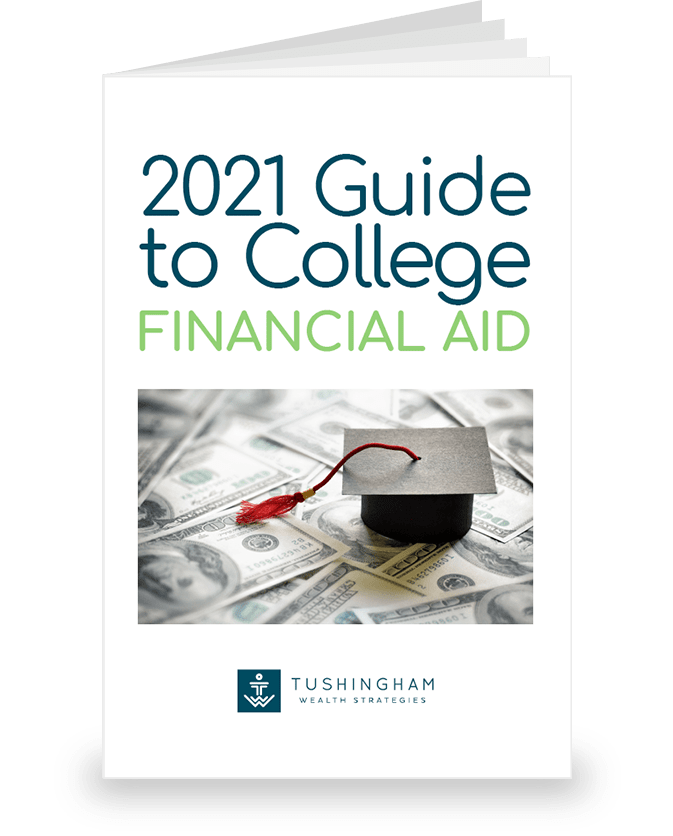The cost of higher education is growing out of control. Meanwhile, the majority of financial advisors fail to help families navigate the shift from saving for college to figuring out how to pay for it — the critical phase of late-stage planning. This lack of planning causes too many students to graduate with excessive student loan debt.
So how can families with college-bound children best prepare? They should develop a college-planning strategy that addresses five key areas: saving, college selection, financial aid, tax aid and wealth management.
SAVING
Before late-stage planning, saving for college is paramount. It’s never too late to start, even if your children are entering high school. The best way is with one of two types of 529 accounts:
529 SAVINGS PLANS
These are state-sponsored savings vehicles that allow you to grow assets tax-free as long as they’re used for qualified educational expenses. Each state offers different investment options and some provide tax deductions for contributions.
529 PREPAID PLANS
Prepaid plans allow you to contribute funds that buy future tuition at current rates. Unlike savings plans in which the chosen investments might lose value, prepaid plans shift the risk to the sponsoring entity. Such plans allow you to buy future tuition at nearly 300 private schools. There are no fees and there is zero market risk.
SCHOOL SELECTION
Helping your college-bound child choose the right school could be the most important part of your plan. Your goal is to determine where he or she will fit in best, get accepted and graduate on time.
Consider working with an admissions expert, a person who’s familiar with campus life, academics, and admissions and financial aid policies at hundreds of colleges and matches students with the schools that best fit their needs. He or she can help narrow your search.
For a less personalized but more affordable resource, some websites match your child with appropriate schools.
Regardless of your approach, keep in mind the school’s culture and your child’s personality. Take into account the size of the campus, its proximity to home, the relative competitiveness of the student body, class sizes, and social activities, such as fraternities and athletics.
FINANCIAL AID
Once you’ve selected the target schools, shift your focus to financial aid:
TYPES OF APPLICATIONS
There are two applications that determine eligibility for need-based financial aid: the Free Application for Federal Student Aid and the CSS Profile. They ask similar questions relating to family finances but can produce dramatically different expected family contributions, or EFCs. Find out which schools use which application to better estimate your out-of-pocket costs.
ASSET STRUCTURING
Reducing your reportable assets can potentially increase your aid eligibility. Work with an advisor or tax professional to ensure you’re utilizing the appropriate strategies.
MERIT AID
Merit aid is based on your child’s unique abilities, be they academic, athletic, musical or civic. It has nothing to with your family’s income or assets and generally comes in the form of scholarships, grants or tuition discounts — which means that it doesn’t have to be paid back.
Some colleges will meet 100% of your child’s need-based aid eligibility with grants and scholarships, while others will use a combination of merit aid, if applicable, and student loans. Use online resources to determine how desirable a candidate your child is to particular schools. If your child stands out, he or she will likely receive more merit-based aid. This is an example of how college selection and affordability go hand in hand — picking the right college can lead to more financial aid that doesn’t have to be paid back.
TAX AID
Tax aid is an often-overlooked aspect of college planning. For example, the American Opportunity Tax Credit can provide up to $10,000 toward the cost of college. If you can’t take the credit yourself, find out if your child qualifies. But your tax planning should go beyond the AOTC.
Consider the tax benefits of shifting appreciated assets, such as stocks, to your child. Your child can potentially sell the assets in his or her name and pay taxes at a lower rate. Make sure that the additional income won’t impact need-based aid eligibility and that it properly navigates the “kiddie tax.”
When executing your college plan, it’s crucial to know in advance how your tax strategies will impact your financial aid. Doing so will ensure that you’re optimizing your tax dollars and financial aid awards.
WEALTH MANAGEMENT
Even after optimizing financial aid and tax aid, parents and children need to determine the best way to pay their shares of the cost.
You want the best for your children, but using home equity or your retirement assets usually isn’t the best path. A better option would be to help pay your child’s student loans once you have more certainty of achieving your own goals.
Keep in mind that student loans might inhibit your child’s ability to save for his or her own retirement or buy a house after college. Too much emphasis is placed on getting into college and not enough on getting out. He or she needs to understand the impact of making loan payments after college on cash flow.
Map out all your funding options, determine the affordability of each school and decide what sacrifices your family is willing to make to pay your share.
You might not be able to control the cost of education, but you can sure plan for it. Start as early as possible, explore all of your options and coordinate with outside professionals as needed. If your current financial advisor isn’t providing coordinated guidance, find someone who can.
College will be one of your greatest investments. The sooner you put a plan together, the better.
This article was originally published on NerdWallet.com

Download our Free Whitepaper on
Understanding College Financial Aid: Download Now
